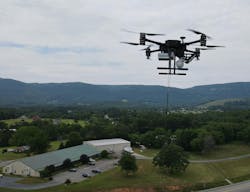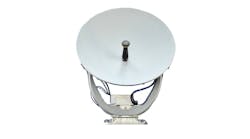REDSTONE ARSENAL, Ala. – U.S. Army researchers are surveying industry to find companies able to develop covert and stealthy tethered unmanned aircraft for reconnaissance and communications relays inside of enemy integrated air defenses.
Officials of the Army Rapid Capabilities and Critical Technologies Office at Redstone Arsenal, Ala., has issued a request for white papers for the Human-Machine Integrated Formations (H-MIF) Tethered-UAS project.
Researchers want a tethered unmanned aerial vehicle (UAV) designed to modular open systems approach (MOSA) guidelines to extend line of sight for intelligence, surveillance, and reconnaissance, as well as to lengthen communications ranges in contested airspace.
This thered UAV should integrated with crewed or uncrewed land vehicles; be able to carry one or more sensor and communications payloads; have a secure base station that interfaces with the host vehicle; remote-control software. The host vehicle also will protect the tethered UAV while not in use.
Modular payloads aboard the tethered UAV should include a stabilized gimbal, daylight cameras, infrared cameras, laser pointers, laser designators, elevated antennas, and radios mounted to a common rail interface. The system's modular control software must be able to run on the computers aboard the host vehicle or within the robotic controller.
When operating within an enemy’s integrated air defense systems bubble, the ability of manned and unmanned aircraft to identify targets may be impaired, researchers explain. In conditions when high-altitude and satellite reconnaissance penetrate enemy air defenses because of terrain, vegetation, and structures, ground units may be vulnerable.
To overcome this capability gap, the Army needs tethered UAVs and host land vehicles to extend line of sight for intelligence, surveillance, and reconnaissance (ISR) as well as extending communications ranges. Such systems must offer reduced signatures, enhanced concealment, and extended endurance.
The UAV's tether must provide a continuous high-capacity and high-bitrate data and power interface between UAV andbase station; the tether must not be a significant RF radiator or be susceptible to RF interference. The base station will draw power from the host vehicle, and its software will control the tethered UAV from inside the host vehicle.
The tethered UAV must be able to carry at least five pounds of payloads; be compatible with a range of sensor and communications payloads; have open-systems control and power links; operate in a GPS-denied environment; operate in bad weather and rough terrain; and have lights that the controller can turn off and on.
The tether will carry power, control, payload data, and RF over fiber links to the base station; must be able to transmit data at rates of between 100 and 1,000 megabits per second; have minimized RF emissions and susceptibility from the tether; and allow operations at distances of between 200 and 300 feet.
The base station must connect to existing host vehicle power and data buses via configurable networking; interface with existing vehicle connections; meet environmental and EMI standards to include rough terrain; allow under-armor and remote launch; offer expandable computing; and interface with the host vehicle's tactical radios.
The controller must have software that runs on a stand-alone tablet computer wired to the base station for maintenance and debugging; and operate as a standalone unit.
Modular payloads must be able to operate with host controller software; use the same physical, data, and power interface on the tethered UAV; include a laser range finder; offer target identification, recognition, and localization; must enable artificial intelligence (AI) and machine learning to assist in detection, target recognition, and tracking; and have radios for signals intelligence (SIGINT), mesh radio, and backhaul using the tethered UAV antenna.
Companies interested should email unclassified white papers no later than 22 April 2024 to the Army's Simone Brightmon at [email protected], Tessa Jones at [email protected], and Jolynda Ivy at paste name here.
Email questions or concerns to the contacts above. More information is online at https://sam.gov/opp/1484619ff8894164b10d599b8112b486/view.



